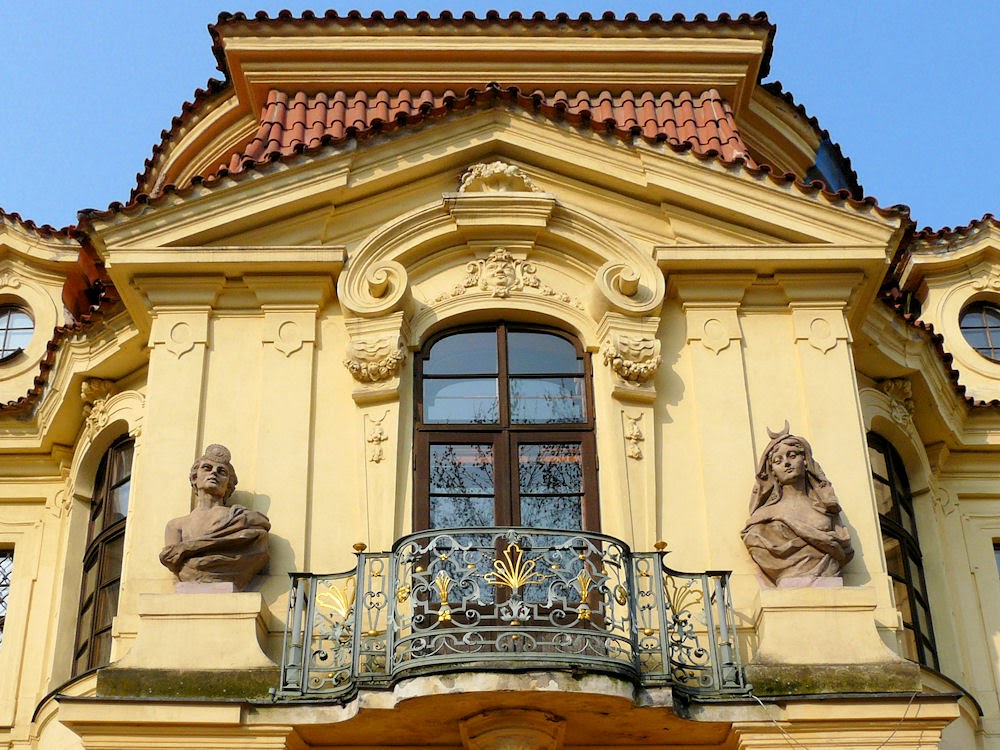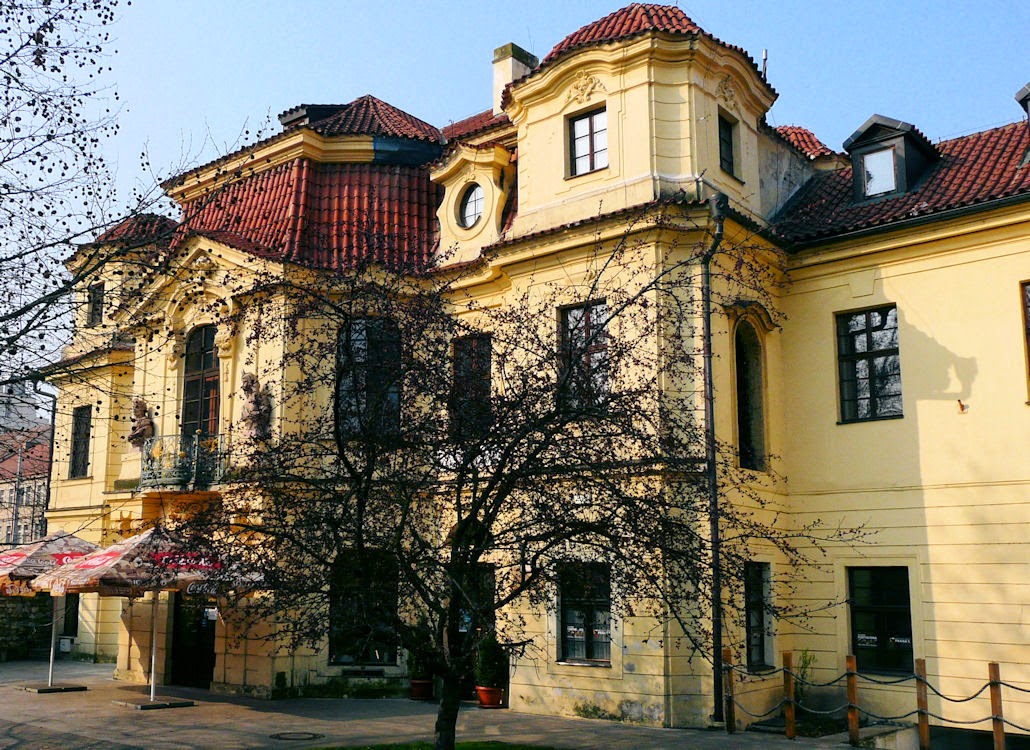Štefánikova 68/12: Portheimka
In 1722, the celebrated Prague architect Kilián Ignác Dientzenhofer purchased a plot of land formerly held by the Jesuits, where his patron Count Jan Václav Michna already owned a substantial garden. Over the course of the next three years, he constructed an elegant Italianate baroque villa for himself and his family.
In 1758 the house was bought by František Leopold Buquoy, an acquaintance of Mozart, who stayed nearby in the 1780s. From its dainty east-facing balcony, supported by its twin allegories of Day and Night, guests would have been afforded an uninterrupted view over the formal Slavatovská gardens stretching down to the riverbank.
During the century that followed, the house was associated with two families whose industrial interests lay respectively in the production of chicory and calico. The last of these, the Jewish Porges family, were honoured for their innovations in steam-driven manufacturing by Emperor Ferdinand V with the hereditary title of ‘Portheim’. As the last private owners before Nazi confiscation, they bequeathed their name to the house: it is still known as Porthheimka.
In 1881, the southern wing was amputated to make room for the new church of Saint Wenceslas. With this exception, the house has been preserved — a remarkable survivor in a predominantly commercial district.










